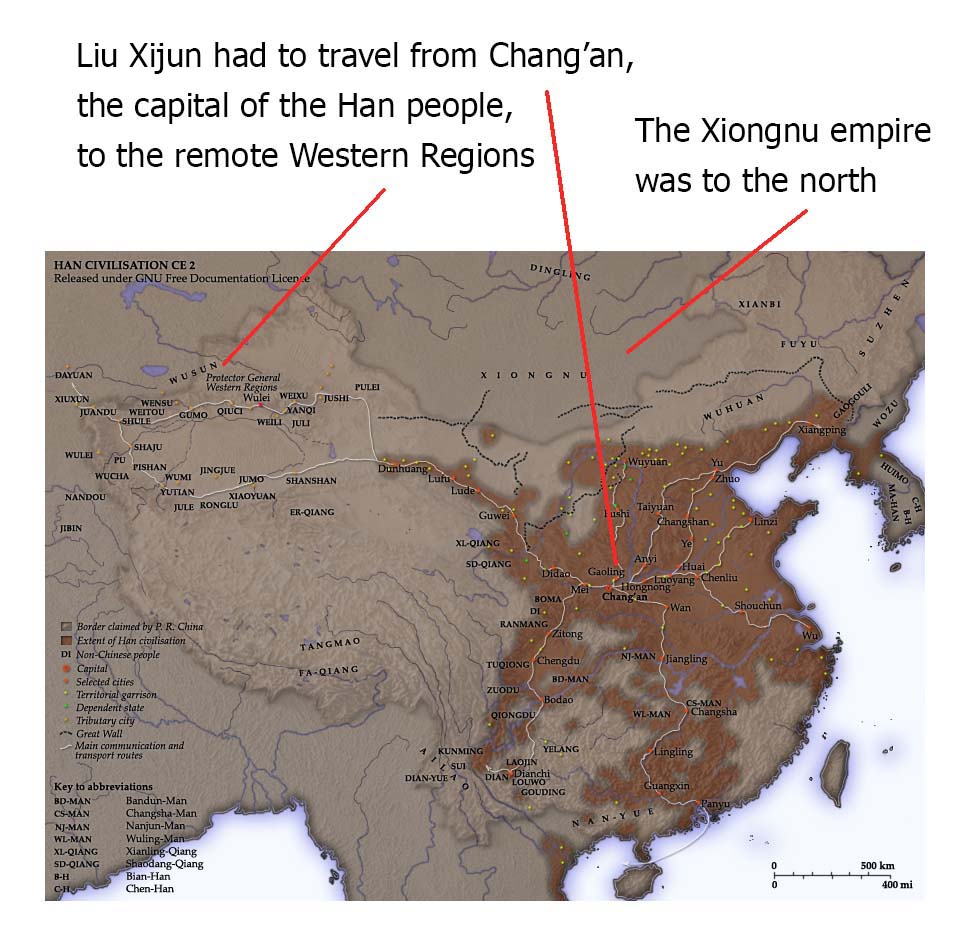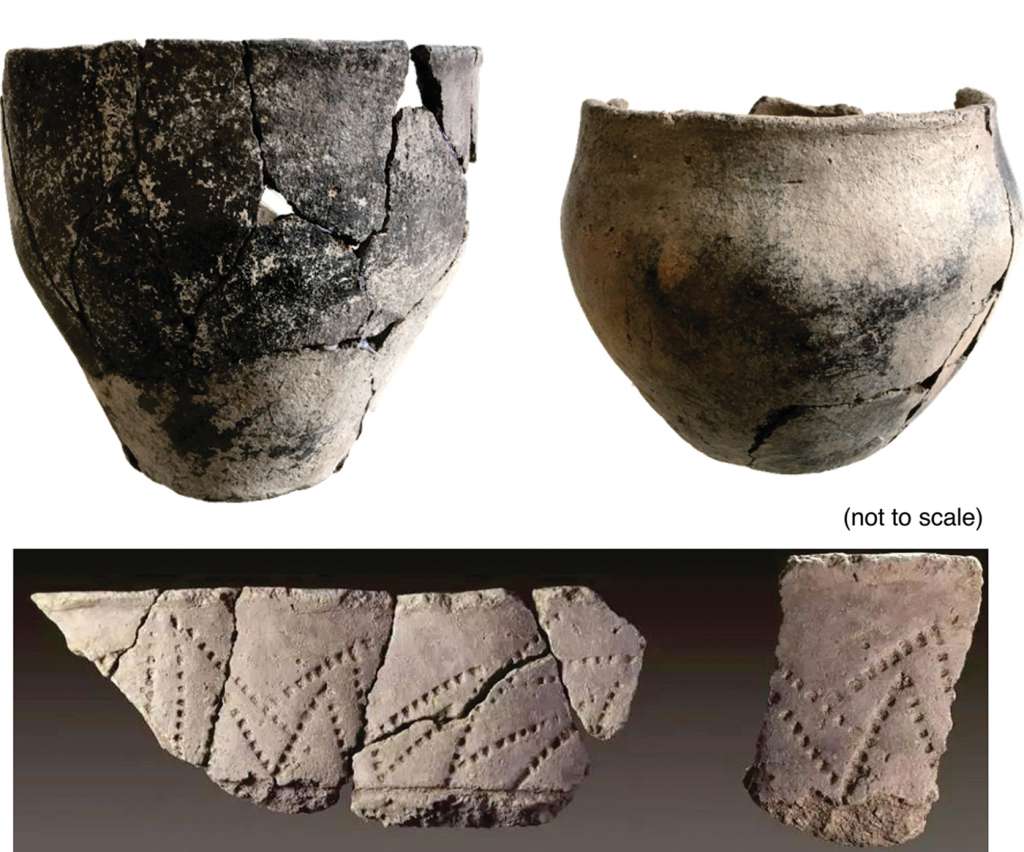MORE THAN TWO millennia ago, a 14-year-old girl was sent on an epic journey to unite two great powers and change the course of history.
She was a Chinese orphan named Liu Xijun, and she had an important job to do.
To the north of China lived the powerful empire of the Xiongnu, a which had conducted many raids on the country. To the far, far northwest was another powerful kingdom, the Wusun.
If the two groups worked together, they could destroy China. How could anyone stop that happening?
BIG JOB FOR A YOUNG GIRL
Young Liu Xijun had been given the rank of princess, and the job of marrying into the Wusun leadership to create a family bond between them and her people, the Han. Using family ties to create peace was common around the world in the past.
But Xijun had one big problem. Her heart wasn’t in it. Perhaps because of her traumatic past, losing both her parents, she was a nervous girl who didn’t want to leave home.
But she did her duty. It took a whole year of travelling to reach the Wusun Kingdom, which was built around the Ili, a majestic river that flowed (and still flows) through what is now called Xinjiang.

At the age of 15, she met and married the King of Wusun. He was elderly, busy, and they shared no languages, so she spent most of her time by herself, getting to know a very different way of life.
She lived in a yurt, and ate the diet of the mountain people. Instead of the delicate vegetables of Chinese cuisine, the people ate fatty meat and drank fermented milk.
One day, she sat by the banks of the river Ili and thought about a famous bird, the yellow crane. It was said that this bird could fly 1,000 Chinese miles without stopping. And in the ancient folktales, the bird could carry a person or a deity.
If only….!
She wrote a poem:
My family married me to the edge of the world;
Far away, in the strange land of the Wusun king,
A domed tent is my chamber, the felt my walls,
Meat is my food, yoghurt my drink.
Living here, I long for my land, and my heart aches
As it wishes I were a yellow crane, flying home.
After two years, the old man died, and Xijun married his son. They had a child together. Liu Xijun fell ill and died the following year, 101 BC, about five years after she arrived in Wusun. But there was peace between the two kingdoms for a while. And it continued.
About 20 years after her death, in 80 BC, the Wusun and the Han people teamed up to attack the Xiongnu. It was the beginning of the end for the powerful northern empire.
THE ILI RIVER
In the dry, mostly arid area known as Xinjiang, there is a piece of land that enjoys sufficient rain, with no irrigation system required. It feeds tens of thousands of residents who live on its banks.

The Ili river, which has been flowing since ancient times, can be said to be the creator of the Uyghur civilization, and is also a witness to the close connection between Turkic and the Han people for more than two thousand years.
Today, Beside the Ili River (伊犁河畔) is a must-learn piece of music for musicians who play the Guzheng, a zither-like instrument popular in China. It is associated with a special branch of Shaanxi-style music which depicts the scenery and customs of western China. When you listen to this music, the picture of the Uyghur peoples’ festive singing and dancing and the splendid landscape of Xinjiang will unfold in front of you.
REMEMBERING THE PRINCESSES
China’s western borders have moved numerous times, sometimes stretching as far as what is now Afghanistan. But during the Han Dynasty period (which lasted about 400 years from 202 BC), the country suffered tensions with warlike empires in the north and west.
Diplomatic efforts by envoy Zhang Qian (张骞), to build unity between the Han and the leaders of the Western Regions failed, so the leadership opted for a traditional alternative – to use princesses to bond the royal families together.

More than a dozen young women did similar jobs, but it is Liu Xijun that stays in many people’s minds. If you travel to Xinjiang today, you can still go to the banks of the Ili river and find a statue and tomb of this brave princess, and a museum celebrating the young women who married into western empires.

CONTINUING THE MISSION
After Xijun’s death, the Emperor sent Princess Jieyou (解忧公主) to Wusan and that marriage lasted for about half a century. The offspring of Jieyou became a leader in the Western Regions.
These two marriages in particular strengthened the connection between the states of the Western Regions and the Central Plains, and were key factors in the growth of the Han-Wusun co-operation and the decline of the Xiongnu empire.
But perhaps that was not all that these teenage women brought with them. In modern times, archaeologists have found a large number of ancient samples of pottery ware under the ground of Ili. The fragile pottery meant that the Wusun people, who were associated with living a nomadic life, likely began to adapt a more settled lifestyle after the two marriages.

The two princesses may well have brought advanced production methods to the Western Regions and promoted the development of commerce between the outlands and the heart of China.
MODERN DAY XINJIANG
Today, the Chinese government has built hydro-power stations on the Ili River that generate 62 billion kilowatt hours of electricity a year. The Ili river not only irrigates the land of Xinjiang, but also brings heat and light to the homes in the region.

And these days, Xinjiang is one of the most popular tourist areas in the world. Many people come to sit by the banks of the Ili river. Some of them, for sure, will know a poem written by a lonely 15-year-old girl as she watched the river birds take to the air, more than two millennia in the past.
My family married me to the edge of the world . . .
Image at the top is a public domain artwork
For more articles on Chinese history and culture, click this line.
